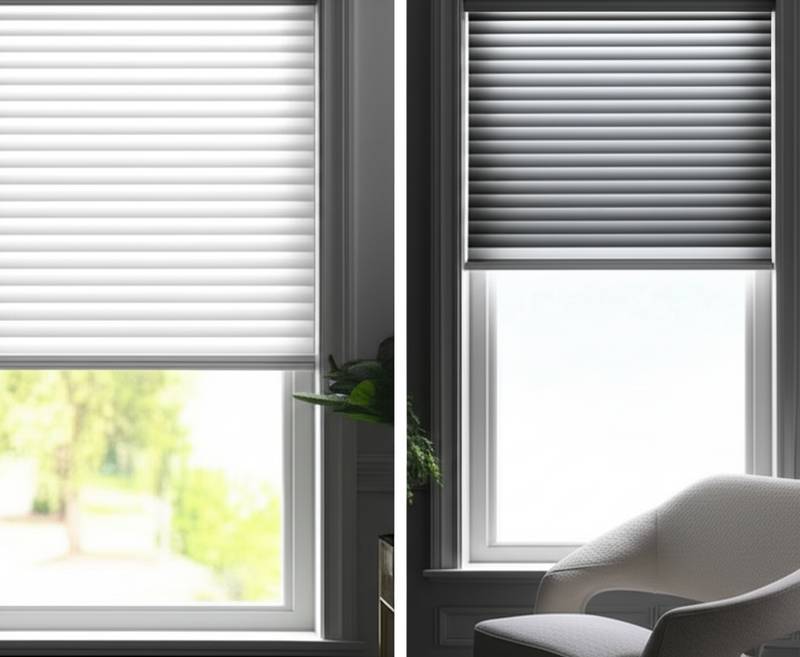Why Smart Blinds Outsell Traditional Window Treatments
Smart homes represent the current standard in residential design, where automation enhances daily interactions with living environments. Voice-activated lighting and adaptive thermostats exemplify this shift from optional features to essential components. Within this landscape, smart blinds emerge as a standout innovation, surpassing sales of conventional blinds and shades in numerous regions. These automated systems deliver superior comfort, energy management, and usability that manual options simply cannot replicate.
The Convenience Factor
Smart blinds eliminate the need for frequent manual adjustments to window coverings, a task that disrupts routines throughout the day. Equipped with built-in sensors, programmable schedules, and intuitive mobile applications, these devices regulate light exposure autonomously. Homeowners benefit from sunrise illumination in the morning, afternoon shading to reduce glare, and evening closure for rest, all without intervention.
Leading brands such as Lutron, Hunter Douglas, and IKEA contribute to widespread adoption by integrating compatibility with voice assistants like Amazon Alexa and Google Home. Users issue simple commands to adjust light levels, creating a seamless blend of advanced technology and everyday ease. This effortless operation aligns with consumer demands for intuitive smart home solutions.
Energy Efficiency and Savings
Rising energy expenses shape household choices, and window treatments influence thermal performance more than many acknowledge. Research from energy organizations indicates that windows contribute substantially to winter heat loss and summer heat influx. Smart blinds counteract these issues by adjusting positions based on real-time sunlight and temperature data, closing during intense midday sun to block heat or opening in cooler mornings to capture passive warmth.
Advanced setups link with smart thermostats for synchronized operation. If the thermostat registers rising indoor temperatures, it prompts the blinds to descend and insulate against solar gain. Such coordination lowers utility costs and stabilizes room climates with minimal user input, appealing to those prioritizing fiscal and environmental responsibility.
Privacy Meets Personalization
While traditional blinds provide basic privacy through manual operation, smart blinds offer refined automation for enhanced security. Owners set timers to lower shades at dusk or upon detecting motion outside. Certain models incorporate geofencing, which activates closure when smartphones exit a predefined radius, ensuring unoccupied homes remain shielded.
Customization elevates the experience further, allowing settings tailored to daily cycles, preferences, or events. Program a reading mode to partially raise blinds for soft light, or a work session to fully open them for natural illumination. These adaptable routines integrate window control into broader home automation, fostering a responsive living space.
Design and Aesthetic Evolution
Advancements in smart blinds extend beyond functionality to visual appeal, with options spanning diverse materials, hues, and textures suited to modern interiors. Initial models appeared cumbersome, but iterative designs now prioritize subtlety, mimicking the elegance of standard shades while embedding motors discreetly.
The absence of cords improves both safety and style, preventing hazards for young children and animals while maintaining uncluttered sightlines. Interior professionals endorse these streamlined alternatives for their ability to harmonize technology with decor, from sleek urban lofts to classic family residences.
Integration With Broader Smart Ecosystems
Smart blinds thrive within interconnected networks of devices that exchange information for cohesive functionality. This synergy drives their market dominance, as consumers reject standalone tools in favor of unified systems. Compatibility with hubs like Apple HomeKit enables blinds to respond alongside lights, security, and climate controls.
A routine command, such as initiating evening mode, might simultaneously adjust illumination, secure entry points, and position shades for optimal privacy. This orchestration simplifies management, turning disparate elements into a fluid, intelligent whole that meets expectations for comprehensive home automation.
Accessibility and Affordability
Technological maturation has democratized smart blinds, reducing costs from premium pricing to budget-friendly ranges. Rechargeable battery options bypass electrical modifications, and guided app tutorials simplify self-installation for novices. Renters and new property owners, once deterred by perceived barriers, now embrace these solutions readily.
Availability expands through major retailers and e-commerce platforms, offering selections from basic kits to bespoke installations. As familiarity increases, buyers view smart blinds as durable assets that enhance property value and adapt to evolving needs over time.
Sustainability and Smart Living
Environmental considerations permeate home upgrades, and smart blinds align by maximizing daylight to minimize electric lighting demands and fine-tuning temperatures to cut HVAC usage. Solar-charging variants further reduce ecological impact, powering operations without grid reliance.
This dual role in comfort and conservation resonates with sustainability-focused individuals. Automated adjustments support efficient resource use, embedding green practices into routine home management without compromising livability.
The Emotional Element of Comfort
Smart blinds influence well-being through subtle enhancements that foster tranquility and assurance. The automated glide of shades in response to environmental cues creates a serene ambiance, where light modulates naturally to suit moods and activities.
For households with children, preset schedules promote healthy sleep by simulating dawn with gradual openings or evenings with soft dimming. These features cultivate a nurturing environment, where technology supports emotional and physical harmony.
Embracing Adaptive Light Control
Smart blinds redefine window management by merging precision automation with thoughtful design and eco-friendly principles. They address practical needs like cost reduction and security while enriching daily life through personalization.
As adoption grows, the transition to these intelligent systems gains momentum, promising homes that evolve with occupants. Owners gain not just functional upgrades, but a foundation for enduring efficiency and ease.
